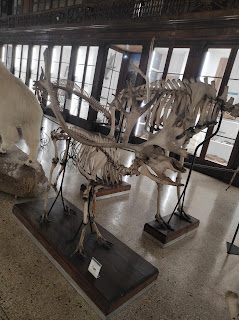The paradoxical European mouflon

A trophy specimen of European mouflon displayed at the Zoological Museum of Naples. This particular specimen was Spanish. European mouflon are a very interesting group of wild sheep of controversial origin, taxonomic position and conservation management. Their "original" range is to be found on the Mediterranean islands of Cyprus, Corsica and Sardinia, where they were brought by humans from Asia around 8500 years BCE, following a pre-domestication phase (but see below) (Castelló et al. 2016; Barbato et al. 2022; Garel et al. 2022; Kárpáti & Náhlik 2023). Because of this, many authors have regarded the Cyprus and Tyrrhenian mouflons as subspecies of the domestic sheep, as Ovis aries ophion and O. a. musimon , respectively (e.g. Castelló et al. 2016). The same specimen as above, from a different angle. However, there is a possibility that the Cyprus mouflon dispersed naturally on the island given lower sea levels at the time, while the domestication that happened in Corsic...





